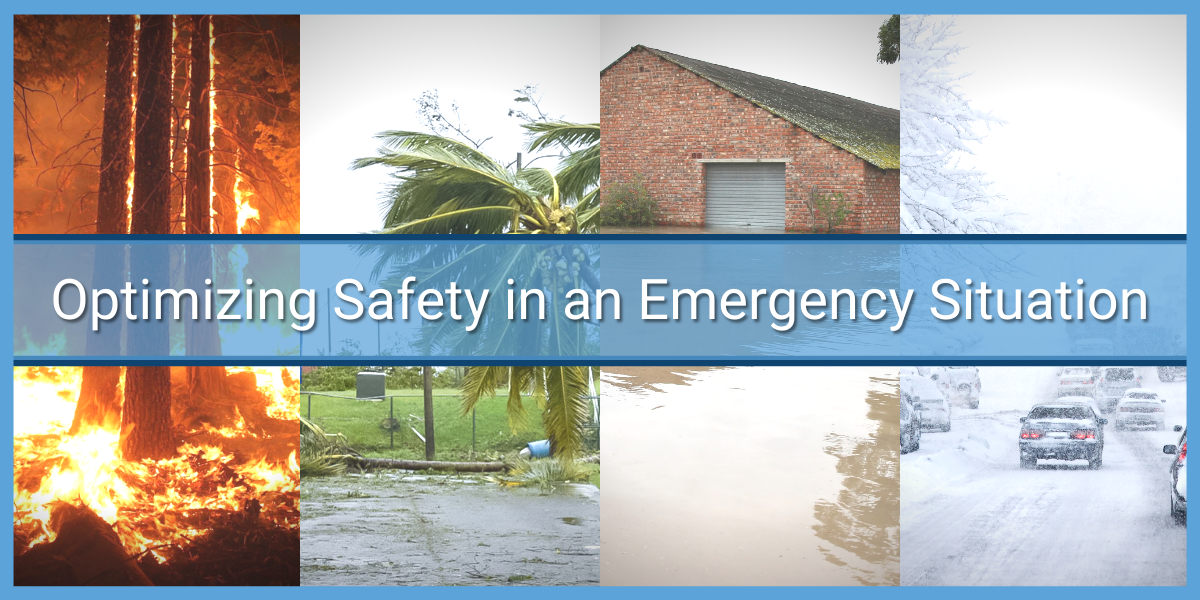Optimizing Safety in an Emergency Situation
Today and especially at this time of year, regardless of where you live, there are emergency situations such as wildfires, hurricanes and floods occurring. Pretty soon snowstorms will be added to the typical types of emergency situations that home care agencies and their front-line staff must navigate. Front line staff have been battling the COVID 19 environment for many months now, to couple on another emergency can leave those staff exhausted and their confidence shaken if the organization has not provided adequate tools to support their daily needs for safety in the workplace.
Emergency situations can create immediate and lasting impacts on staff, patients and the home care organization. Preparation and successful adaptation during an emergency rests with well developed readiness plan that includes planning and preparation, response and post emergency phases. By its very nature, emergency situations are unplanned and perhaps unpredictable.
All phases of an emergency situation can be optimized through the integration of technology (hardware and software) to deal with the chaos and upheaval that inevitably results with all emergency situations.
Tools that optimize coordination, collaboration, communication learning management, risk management and data analytics systems are essential for success.
Coordination
Sudden shifts in patient schedules, being able to triage essential service patients, reduction in staffing directly affected by the emergency and potential increase in volume of patients requires software that can manage all of those variables effectively to ensure patients get the care they need when they need it, staff have the hours they need for work security and that the organization can thrive.
Collaboration
Collaboration across the health care team and connecting people to each other at the last minute is critical to successful response in an emergency situation. Whether that includes online collaboration tools, visibility into the patient care plan to ensure consistency of care, or access to a shared electronic health record collaboration among the team will ensure best possible outcomes for the patient.
Communication
Perhaps the most important technology enabled aspect to any emergency. Communication that can include, broadcast email communication about impeding dangers, secure messaging regarding sudden changes in patient condition and real time alerts and notifications of changes to schedules are all essential to staff feeling they are supported and in the know about the evolving situation.
Learning Management
During an emergency situation it is not uncommon to have changes in care delivery practices, new staff seeing new patients requiring additional education about specifics of care or implementation of a brand-new protocols that staff need to learn about. In all of these situations, access to online education that is available just in time to the staff at a time that suits the staff scheduled, enhances the educational uptake and eases the burden of the knowledge transfer and translation process.
Risk Management
In the home care environment, technology that supports a shift to real time knowledge about what is happening in the field is “life changing”. Real time alerts/notifications triggered on key service delivery factors such as late starts, missed care and clinical alerts allow for real time intervention and response before a negative patient or staff experience actually happens.
Data Analytics
Now more than ever having data at your fingertips in real time is fundamental to making the most informed decision regarding staff, patients, and impact on the organization in both the immediate and future context. Data warehouses with business intelligence tools are key to prospective, retrospective and predictive analytics that every organization needs. While emergency situations create chaos, with the help of technology enabled tools for coordination, collaboration, communication, learning management, risk management and data analytics the agency can continue to ensure safe, quality care provision for patients, a safe working environment for staff and sustainability for the organization.


